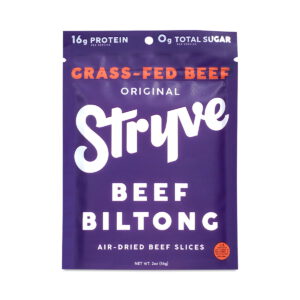- Grocery shopping essentials for busy professionals
- Choosing safe ingredients
- Understanding food labels
- Smart shopping strategies
- Meal planning tips for efficiency
- Storing food safely at home
When juggling a busy schedule, the grocery shopping experience can often feel overwhelming. To streamline the process while still making nutritious choices, it’s essential to master a few key essentials that cater to your lifestyle. Start with creating a well-structured shopping list that includes healthy options, local favorites, and budget-friendly items. This not only saves time but also helps minimize impulse buys, keeping your spending in check.
Focus on incorporating a variety of whole foods into your cart. Fresh fruits and vegetables are a must; they provide essential vitamins and antioxidants. Consider seasonal produce to support local farmers and save money. Items like kale, berries, and sweet potatoes not only pack a nutritional punch but are also versatile, allowing for various meal preparations throughout the week.
For the busy professional, convenience is key. Look for pre-cut or pre-washed versions of fruits and vegetables, which can be more expensive, but save time on meal prep. Another option is frozen fruits and vegetables, which are picked at peak ripeness and can be just as nutritious as fresh varieties. Frozen foods are perfect for quick smoothies or stir-fries, ensuring you can whip up healthy meals in minutes.
If you’re a fitness enthusiast, stock up on protein-rich foods such as legumes, lentils, chickpeas, and quinoa. These are not only great for muscle recovery but are also inexpensive and filling. For those following a vegan lifestyle, opt for fortified plant-based milks, nutritional yeast, and a variety of nuts and seeds to ensure adequate nutrient intake.
As you navigate the aisles, always check for organic options if your budget allows. Many grocery stores now offer a range of organic products, from produce to pantry staples, which can be beneficial for your health. If organic isn’t an option, consult the Environmental Working Group’s “Dirty Dozen” list to identify produce that is most important to buy organic to reduce pesticide exposure.
Don’t overlook your local grocery stores or farmer’s markets for fresh, high-quality items. Often, these venues offer better prices and fresher selections than large chains. Plus, shopping local strengthens communities and reduces your carbon footprint.
When shopping online, always prioritize safety. Use reputable websites and double-check ingredient lists to ensure no allergens are present. Watch out for shipping charges that could make your healthy finds less economical. Take advantage of subscription services that offer regular deliveries of staples you use frequently, which can streamline your grocery routine.
Consider planning your shopping trips during off-peak hours to avoid crowds, making the process more enjoyable and less rushed. With these strategies in mind, you’ll navigate the grocery store like a pro, making healthy choices that align with your busy lifestyle.
Choosing safe ingredients
When selecting ingredients, it’s crucial to prioritize safety, not just for health but also for overall quality. Begin by recognizing the significance of buying foods with minimal processing and fewer additives. Whole foods, such as fresh fruits, vegetables, nuts, seeds, and whole grains, are generally safer choices. They are less likely to contain harmful preservatives or artificial ingredients that can affect health negatively.
Understanding where your food comes from is also essential. Look for products that have clear labeling regarding their source, as this can often be a reflection of their safety standards. Foods grown locally tend to be fresher and have a lower risk of contamination. Additionally, avoid ingredients with excessive packaging that could contain harmful chemicals such as BPA, which can leach into food.
When it comes to perishables, like dairy and meats, always check for freshness indicators. Look for expiration dates and be cautious of products that appear to be close to these dates. If possible, choose items that are pasteurized or have been treated to eliminate pathogens, especially for dairy products. Always opt for meat that has been properly sealed and has no blemishes on the packaging, ensuring minimal exposure to harmful bacteria.
A helpful approach to ensure safe ingredient selection is to familiarize yourself with common food safety labels. Use the table below to compare various certifications and what they signify in terms of ingredient safety:
| Label | What It Means |
|---|---|
| USDA Organic | Foods are produced without synthetic fertilizers, pesticides, or genetically modified organisms (GMOs). |
| Non-GMO Project Verified | This certification ensures that the product has been produced without genetically engineered ingredients. |
| Grass-Fed | Meat and dairy come from animals that have been fed a diet of grass rather than grain, which can enhance nutritional quality. |
| Certified Humane | Indicates that the animals were raised and handled in a humane manner, often linked to better health and quality of meat. |
| Fair Trade | This label ensures that farmers and workers are paid fair wages and that the products meet ecological and social standards. |
In addition to labels, be aware of allergen information. If you or anyone in your household has specific dietary restrictions or food allergies, always read the ingredient lists carefully, even for familiar brands. Allergens can sometimes be hidden in processed foods, and cross-contamination is a risk worth considering, especially in bulk items.
When considering processed foods, make sure to limit those with long ingredient lists filled with unrecognizable items. As a rule of thumb, the shorter the ingredient list, the safer it generally is. Limit purchases of foods high in refined sugars, unhealthy fats, and sodium, as these can contribute to various health issues, including obesity and heart disease.
Lastly, don’t hesitate to inquire about food sourcing and handling practices at your local stores or markets. Knowledgeable staff can provide insights into the safety and quality of their products, giving you more confidence in your purchases.
By being vigilant and informed about ingredient safety, you can create a shopping routine that not only suits your busy lifestyle but also promotes long-term health and well-being.
Understanding food labels

Understanding food labels is a key component in making informed and healthy choices while grocery shopping. Labels can provide essential information about nutritional content, ingredient sourcing, and safety practices. However, the challenge often lies in deciphering the plethora of data presented. Here’s how to effectively navigate food labels for a healthier shopping experience.
Start with the Nutrition Facts panel. This section provides a quick overview of the food’s contributing nutrients, such as calories, fats, proteins, carbohydrates, and essential vitamins and minerals. Pay attention to serving sizes; oftentimes, the nutritional values are based on a single serving, which can be misleading for products that appear to be larger servings. It’s crucial to assess whether the serving size aligns with your dietary needs, especially if you are monitoring caloric intake for fitness or weight management.
Next, be wary of added sugars. The American Heart Association recommends limiting added sugars to about 6 teaspoons (25 grams) for women and 9 teaspoons (38 grams) for men daily. Look for products that have minimal to no added sugars, particularly those with ingredients like high fructose corn syrup or cane sugar listed among the first few ingredients. Instead, opt for naturally sweet options like fruits or products with natural sweeteners like honey or maple syrup.
Ingredient lists can often be a telltale sign of a product’s overall health. A long list filled with hard-to-pronounce components usually indicates highly processed foods. Aim for products with recognizable ingredients, ideally from whole food sources. When purchasing snacks or packaged foods, seek options where whole grains like oats or brown rice are listed as the first ingredient, which can signal higher nutritional quality.
For those adhering to a vegan lifestyle, labels are particularly important to ensure no animal-derived ingredients are present. Look for terms like “vegan” or “plant-based” clearly marked on the packaging. Additionally, be on the lookout for common allergens such as nuts, gluten, or dairy, as these can often be present in seemingly innocuous products. The Allergen Declaration in a dedicated section of the label can provide crucial information for those sensitive to specific ingredients.
Organic labels also merit attention. Products labeled USDA Organic meet specific standards for sustainability and pesticide use. However, remember that organic doesn’t automatically imply healthier—in some cases, organic snacks still carry high levels of sugar and salt. Always assess the complete nutritional profile, regardless of organic status.
If you’re concerned about the environmental impact of your food choices, look for labels indicating fair trade or sustainable farming practices. These labels usually denote ethical sourcing and support for small farmers, enriching both community health and the environment.
When shopping online, the challenge remains similar; however, ensure that you research brands carefully before making purchases. Read reviews on safety and quality, and make use of reputable online grocery services known for transparency. Being attentive to ingredient sourcing online can safeguard against harmful substances, including allergens.
Mastering the art of reading food labels is essential not only for maintaining your health but also for making values-based purchasing decisions. By familiarizing yourself with the components of food labels and making informed selections, you can ensure the products you bring home are safe, nutritious, and aligned with your lifestyle goals.
Smart shopping strategies
To optimize your grocery shopping experience while maintaining a busy lifestyle, implementing smart strategies is essential. Start by organizing your shopping list according to the layout of your local grocery store. This minimizes backtracking and helps you remain efficient. Group items into categories such as produce, dairy, grains, and protein, creating a clean pathway through the store and reducing the time spent navigating aisles.
Consider stocking up on your pantry staples during sales. Buying in bulk not only saves money but ensures you have essential items available when you need them. Focus on shelf-stable products such as grains, legumes, canned goods, and frozen vegetables that lend themselves to quick meals and can be stored for extended periods. However, ensure that you don’t overstock perishables that may spoil before consumption, turning a deal into waste.
Utilizing a grocery delivery or pickup service can significantly reduce shopping time. Many stores now offer these conveniences, allowing you to order essentials online. This feature not only saves time but also helps you stick to your list and avoid impulse purchases. Additionally, you can take advantage of user-friendly apps that keep track of your pantry inventory, sending alerts when you’re running low on items.
While in the store, be strategic about timing your visits. Shopping during late mornings or early afternoons can help you avoid long lines and crowded aisles, making the experience less overwhelming. If you prefer to avoid the hustle and bustle entirely, consider making your trips during weekdays when stores tend to have fewer customers.
Don’t hesitate to ask for help. Store associates can aid in locating items, saving you precious time. Also, if you’re trying something new or uncertain about an ingredient, ask questions; they can provide valuable insights or suggestions tailored to your needs. Sometimes, a great new product can be found with just a little inquiry.
Incorporate meal kits into your routine for even more convenience. These kits not only save time with pre-measured ingredients but also inspire healthy cooking without the hassle of figuring out what to prepare. They can be particularly helpful during busy weeks, ensuring that you still enjoy home-cooked meals without the time-consuming planning or shopping for multiple ingredients.
As you shop, be mindful of product positioning within the store. Eye-level shelves often house the most expensive items, while more affordable or healthy options may be placed higher or lower. Don’t miss out on these hidden gems by being deliberate in your search. Additionally, try to steer clear of end-cap displays that frequently showcase impulse buys, as these can easily derail your budget.
“Success depends upon previous preparation, and without such preparation, there is sure to be failure.” — Confucius
Taking the time to plan ahead and shop wisely pays dividends in the long run, allowing you to maintain a healthy lifestyle despite a hectic schedule. Experiment with different strategies and find what best fits your personal preferences and routines. By investing effort into your grocery shopping approach, you’ll discover that it not only becomes more efficient but also more enjoyable.
Meal planning tips for efficiency

Efficient meal planning can dramatically simplify your grocery shopping and cooking routines, saving you time while ensuring you eat healthy throughout the week. Start by dedicating a specific time each week to plan your meals. This practice allows you to thoughtfully consider what you and your family enjoy while incorporating seasonal ingredients that can enhance flavor and nutrition. Take advantage of sales and promotions to build your weekly meal plan around budget-friendly options, ensuring that you get the most value without sacrificing quality.
Utilizing batch cooking is another smart technique. Prepare larger quantities of staple dishes that can be easily stored and reheated later in the week. This not only reduces the time spent cooking on busy days but also ensures you have nutritious options readily available to prevent reliance on unhealthy fast food. Think about making soups, stews, or casseroles that can be frozen in individual portions. On days when you know your schedule will be tight, simply grab a pre-prepared meal from your freezer.
Incorporate themes into your meal planning to streamline the process. For example, designating certain days for specific types of cuisine—like Meatless Monday, Taco Tuesday, or Stir-Fry Wednesday—can simplify decision-making and inspire creativity in the kitchen. A theme can guide both your grocery list and meal prep, making it easier to focus on the ingredients you’ll need while also reducing the likelihood of food waste.
Keep a well-stocked pantry with versatile staples that can be used across various meals. Items like brown rice, quinoa, lentils, canned beans, and a variety of spices can serve as the foundation for countless dishes. Incorporating these essentials makes it easier to whip together a meal without needing a long grocery list every week. Additionally, a rotating list of go-to recipes can expedite your planning process, preventing the dreaded meal prep burnout.
Finally, consider using digital tools to assist with your meal planning. Numerous apps can help you organize recipes, create shopping lists based on your meal plan, and track what’s already in your pantry. These resources can help reduce the cognitive load of meal planning and make it easier to stick to your health goals. As technology evolves, harnessing these tools not only makes shopping more efficient but can also open doors to exploring new recipes and culinary experiences.
- What is batch cooking?
- Batch cooking involves preparing larger quantities of meals in advance, which can then be stored and reheated throughout the week. This method saves time during hectic days and promotes healthier eating by ensuring nutritious meals are readily available.
- How can I prevent food waste while meal planning?
- To minimize food waste, plan meals around ingredients that will spoil soon and incorporate leftovers into new dishes. Maintaining a well-organized pantry and freezer helps you keep track of items you need to use, making it easier to create meals from existing ingredients.
- What are the benefits of meal planning?
- Meal planning can save time, reduce stress, and promote healthier eating habits. It helps prevent impulse purchases at the store and ensures you have a structured approach to preparing nutritious meals each week.
- How do I create a meal planning schedule?
- Start by choosing a day of the week to plan your meals, then list out desired recipes based on ingredients you already have and those that are on sale. These meals should align with your family’s preferences and dietary needs for the week ahead.
- What should I keep stocked in my pantry for meal planning?
- Stock your pantry with versatile staples like grains (rice, quinoa), legumes (canned beans, lentils), canned vegetables, spices, and oils. These basics can form the foundation of many healthy meals, ensuring variety and balance without extensive shopping trips.
- Are there apps that can help with meal planning?
- Yes, there are several apps available that can help streamline meal planning, providing features like recipe organization, shopping list creation, and inventory tracking. These tools can simplify the task and inspire your cooking adventures.
- What are theme-based meal plans?
- Theme-based meal plans involve designating specific types of cuisine or meal styles for certain days of the week, making it easier to formulate shopping lists and recipes. This approach can also add variety and fun to your weekly dining experience.
Storing food safely at home
Storing food safely at home is a crucial part of maintaining your health and minimizing food waste. With the busy professional lifestyle in mind, it’s essential to develop effective storage practices that ensure your ingredients stay fresh and safe for consumption. Start by organizing your pantry and refrigerator. Use clear bins or labeled containers to categorize items, making it easier to locate ingredients quickly. This also helps you keep track of what you have on hand, reducing the chances of buying duplicates.
When it comes to perishables, understanding the proper storage methods can extend their lifespan significantly. Fruits and vegetables each have their ideal storage conditions. For example, store apples in the fridge away from other fruits to prevent them from ripening too quickly. Leafy greens, on the other hand, should be washed, dried thoroughly, and placed in a sealed container with a paper towel to absorb excess moisture, keeping them crisp for longer. Remember, many root vegetables, such as carrots and potatoes, should be kept in a cool, dark place rather than the refrigerator to preserve their textures.
For meat and dairy products, use a thermometer to ensure your refrigerator stays at or below 40°F (4°C). Store raw meats on the bottom shelf to avoid cross-contamination with other foods. Packaging is another essential aspect; if you buy in bulk, divide large packages into smaller portions for freezing. This saves time and helps you avoid freezer burn. When defrosting, do so in the refrigerator, under cold water, or in the microwave, rather than at room temperature to prevent bacterial growth.
If you enjoy cooking plant-based meals, utilize your freezer efficiently. Consider freezing herbs in olive oil in ice cube trays for easy access whenever you need to add flavor to dishes. Additionally, cooked grains and legumes can be portioned into airtight containers and frozen for quick additions to salads or stir-fries on busy days.
Apart from food itself, maintaining a clean storage environment is just as important. Clean your refrigerator regularly, ensuring there are no spills or spoiled items that could contaminate others. Use a solution of warm water and vinegar to wipe down surfaces; it’s both effective and safe. For pantry items, keep an eye out for expiration dates and organize items by ‘first in, first out’ (FIFO) to utilize older products before newer ones, minimizing waste.
When it comes to food safety, be mindful of potential allergens. Store allergen-laden foods separately from others to prevent cross-contamination. Label homemade meals with the date they were prepared and include allergen information if shared with family or friends to ensure safety for everyone involved.
Lastly, embodying the practice of proper storage extends to your online shopping habits. If ordering groceries online, opt for delivery services that prioritize proper packaging and temperature control for perishables. Consider selecting items that are shipped in insulated packaging to maintain freshness. Always inspect items upon arrival; if anything seems off in color, texture, or smell, don’t hesitate to contact customer service for a refund or replacement.
Being proactive about food storage techniques not only keeps your meals nutritious but also contributes to a more efficient and organized kitchen, perfect for busy professionals. With these tips, you’re well on your way to creating a safer and more enjoyable cooking experience at home.
New Customers Offer!
Free Gift for the new customer
$24 Value, When You Subscrib Visit Thrive Market












